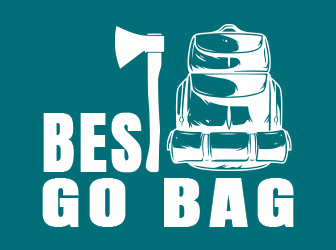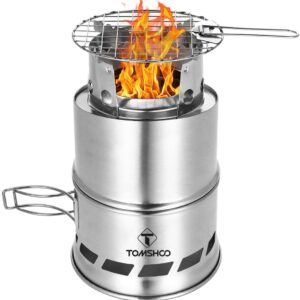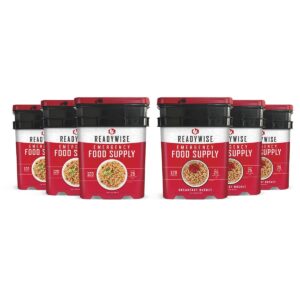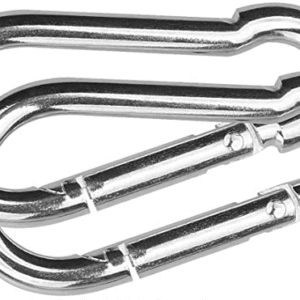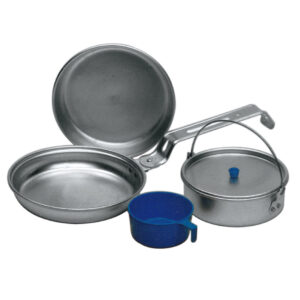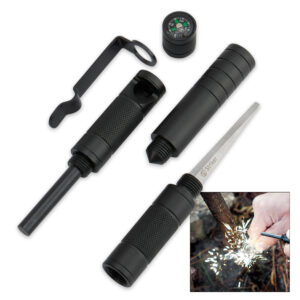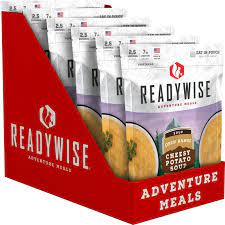Survival Food vs. MREs – Which Do You Prefer?
If you had to choose between survival food and MREs, which would you pick?
Survival food might seem like the obvious answer. But let’s look at the pros and cons of each before we jump to any conclusions.
As a general rule, MREs (meals ready to eat) don’t have a great reputation. Complaints range from the lack of taste and nutritional value to poor shelf life and high cost (over $7 each). They’re often heavy, and each package feeds only one person.
But they have fed U.S. military personnel for many decades. And they’ve improved through the years. Self-contained MREs come in airtight packaging. And they should last a few years under most conditions.
MREs are highly processed
Today’s MREs usually include a main entrée (such as beef stew or spaghetti). Plus a side dish (like rice, corn or mashed potatoes), a starch (cracker or bread), and a spread (peanut butter, jelly or cheese).
As well as a dessert (cookies or pound cake) and a piece of candy (Skittles, M&Ms or Tootsie Rolls). Also, a beverage (coffee, tea, dairy shakes, cocoa). Some come with a flameless heater, so you get a hot meal.
Making the food highly processed is the only solution to keeping MREs shelf-stable in extreme weather conditions. But they’re ready to eat on the spot. And they provide enough calories for soldiers to keep moving.
There is some variety with MREs (24 different meals as of last count). But you can’t mix and match. You get what’s in your container and that’s that. They have about 1,300 calories per meal. With 55% of the energy coming from carbohydrates, 35% from fat, and 15% from protein.
It’s often disclosed that you shouldn’t rely on MREs as a long-term food source. Eating MREs for more than 21 days can lead to nutritional deficiencies that could affect your health.
Survival food checks all the boxes
Survival food has many more pros than cons. Dehydrated and freeze-dried foods are very affordable. Especially compared to MREs.
They also have much longer shelf lives. When stored properly, they can maintain their taste and nutritional value for 25 years.
Survival food is lightweight. Mainly due to nearly all the moisture being removed prior to packaging. And they can be easily stored – preferably in a cool, dark, dry place.
Meals made from survival food are simple and quick to prepare. And multiple people can be fed from a single package of survival food. If there’s any downside to survival food when compared to MREs, it’s that most items require water for rehydration.
Putting myths to rest
In addition to the information provided above, you may have heard myths about survival food. Let’s put a few of those to rest right now.
Myth: You can store survival food anywhere. Sure, you can, but some locations are much better than others. Remember, the enemies of food preservation include heat, light, and moisture. Make sure to avoid each when you store your survival food.
Myth: People will eat anything when they’re starving. Again, sure, but the variety in survival food is essential for good health during a crisis. Variety provides different nutrients your body needs.
Myth: Survival food tastes bad. Unlike canned food that can lose its taste and nutritional value over time, freeze-dried survival food tastes as good and fresh as the day it is packaged.
Comparing MREs with survival food
Let’s quickly review what makes MREs different from survival food.
MREs: Will last 3-5 years under proper storage conditions.
Survival food: Will last up to 25 years under proper storage conditions.
MREs: Are expensive. Can run you up to $30 a day.
Survival food: Is cost-effective. Often just a little over $1 per serving.
MREs: Bulky and heavy. Storing and transporting them can be difficult.
Survival food: Because nearly all the moisture is removed, it’s compact and easy to move.
MREs: Each container feeds only one person. Items not consumed are usually tossed.
Survival food: Packages that feed multiple people are resealable.
MREs: Are highly processed in order to maintain their longevity.
Survival food: Vitamins and nutrients are preserved through the freeze-drying process.
Needed more now than ever
Extreme weather, worldwide tensions, airborne illnesses… everything is stacking up to make food less available and more expensive.
You owe it to yourself and your family to make sure you’re stocked up with at least three months’ worth of survival food. And a reliable water filtering device. Now is an ideal time to do it.
With our Veterans Day special, 4Patriots is offering a 3-month supply of great-tasting, nutritious, and long-lasting survival food. It comes with over $750 in free bonuses. Including a countertop water filtration system. Plus freeze-dried beef and chicken. And two 72-hour survival food kits.
Military Backpacks & Your Survival Stash Have Much in Common
Two weeks ago, I sent you an email on the topic of U.S. troops carrying cellphones. We went through the pros (communication and morale). As well as the cons (security risks including revealing locations).
There are different opinions on this subject. But one thing I think we can all agree on is what our troops definitely should carry while on duty.
That’s what we’ll discuss today. Some of these same things are items we should either carry or at least have stockpiled at home. Just in case of an emergency.
At the end I’ll tell you about a 4Patriots offer that solves two of the biggest challenges you’ll have during a crisis.
Troops carry own stuff
You’ve seen photos of our troops on battlefields. They almost always carry a backpack filled with items they can quickly access.
Back in the day, soldiers didn’t carry much equipment. A wagon holding those items would follow them.
But today’s troops need to access items quicker. And supply wagons are too tempting of a target for the enemy. So, soldiers now carry their own stuff.
The backpacks themselves are usually black. That makes them less visible at night. Another option is camouflage matching the soldier’s attire.
Water bladders
Now let’s get into the backpack’s contents. Keeping in mind that at any moment a soldier might require life-saving equipment.
Especially when they face dangerous and harsh conditions. And when there is no fresh water or food source near them.
Instead of bulky canteens troops once carried, they now have hydration bladders. Lighter in weight, these bladders feature a tube that reaches the soldier’s mouth.
An added convenience for military personnel is that the bladders are self-cleaning. And anti-bacterial. This rids their water of most contaminants.
Food rations
When troops are marching across a battlefield, there are very few McDonald’s in sight. So, they must carry their food.
Protein bars are a great source of energy and sustenance. But sometimes troops require food that also provides warmth.
Some of their food sources include flameless ration heaters. In 12 minutes with no visible flame, a food item can be heated to 100 degrees Fahrenheit.
One thing troops have learned – sometimes the hard way – is it’s better to have too much food than not enough. They never know when a mission might require more time than anticipated.
First-aid kit
Injuries come with the territory when a military mission is involved. These injuries range from minor to moderate to major.
A troop’s first-aid kit must be comprehensive enough to treat minor and moderate injuries. And it should contain items that will at least stabilize a major injury.
With the assistance of other troops, they can use items in a first-aid kit to patch up wounds. That carries them over to when they’re in a position to receive more treatment.
Medicines for a variety of injuries are included in military backpacks. The kits also include items such as sunscreen.
Tactical flashlight
A tactical flashlight is also a must for military personnel. That’s because it can be used for a multitude of purposes.
Shining a bright light in the darkness is an obvious one. But these flashlights can do much more.
Including cutting through a barrier and breaking glass with its hammer. They also feature different light settings.
A durable tactical flashlight can save a life. They can be charged with their solar panel and power up other devices. Most also feature a magnet and compass.
Additional items
What other items can be found in a soldier’s backpack? Here are seven…
- Ammunition for guns they carry
- Gun-cleaning kit
- Body armor they’re not currently wearing
- Folded one-person tent (or part of a larger group tent)
- Compass
- Sleeping bag
- Extra clothing (especially clean, dry socks)
Food & water filtration at your fingertips
Take a quick look back at some of the items I’ve mentioned. Like food and water. Plus a tactical flashlight, first-aid, etc. Having these same types of items in your personal survival supply is important.
You may never find yourself out on a battlefield. But it might feel that way when disaster strikes. Wouldn’t you rather be over-prepared than under-prepared?
As promised, here’s a way you can ensure that with just one decision. You can get a 3-month supply of great-tasting, nutritious, and long-lasting survival food. Plus $752.30 in free bonuses.
Our Veterans Day special includes a free countertop water filtration system, free freeze-dried beef and chicken, free mini survival food kits & more.
Air Pollution Outside Means Poor Air Quality Indoors
When air pollution becomes worse than normal, city officials recommend staying indoors as much as possible. Makes perfect sense, right?
But the truth is, outdoor air pollution seeps into homes, schools, and businesses. Add that pollution to poor air quality already existing inside buildings… And now merely breathing can negatively affect your health. Apparently what you can’t see can hurt you.
A study published in the Journal of the American Medical Association claims air pollution caused by tiny particles called PM2.5 may be as harmful to your lungs as smoking cigarettes. When we inhale, these particles lodge in our lungs’ small blood vessels.
Today I want to tell you which U.S. cities and states have the poorest air quality. Maybe you live in or near one of them. I’ll also let you know the best way to ensure you’re breathing the best air possible. Regardless of where you live.
10 Worst Cities & States
Here’s a list of the 10 worst U.S. areas for air quality. This is according to the American Lung Association. They also tell us 40% of Americans live in states with unhealthy air pollution levels. Let the countdown begin:
10 – San Diego/Carlsbad, California
9 – Hanford/Corcoran, California
8 – Payson, Arizona
7 – Fresno, California
6 – Los Angeles/Long Beach/Anaheim, California
5 – Phoenix/Mesa/Scottsdale, Arizona
4 – Visalia/Porterville, California
3 – Bakersfield, California
2 – Hilo, Hawaii
1 – Riverside/San Bernardino/Ontario, California
Other cities ranking in the “worst 30” include Denver, Salt Lake City, Las Vegas, Chicago, and Pittsburgh. Plus Philadelphia, El Paso, St. Louis, and Detroit. As well as Albuquerque, San Francisco, and New York.
The 10 most polluted states in America, according to wisevoter.com, are:
10 – Wyoming
9 – Iowa
8 – Oklahoma
7 – Colorado
6 – Illinois
5 – Nevada
4 – Utah
3 – District of Columbia
2 – Arizona
1 – California
500 Different Pollutants?
A recent report from the Lung Institute declared that indoor air is “much more polluted” than outdoor air. Now, if we spent 90% of our time outdoors, that might not be a big problem. But the fact is, Americans spend about 90% of their time indoors.
And that’s on average. During winter months, the percentage rises. It doesn’t help that we keep our windows and doors closed more during the winter.
Indoor air contaminants have been linked to serious health ailments. The World Health Organization estimates that in one recent year, 4.3 million people lost their lives due to indoor air pollution.
According to a study from Environmental Health Sciences, your home’s air could have 500 different pollutants in it.
Minor Irritations to Major Problems
Maybe your city or state was not mentioned above. But there’s still a good chance you’re breathing in harmful contaminants in your home’s air.
Among things that cause poor indoor air quality are mold and pollen. As well as household products and pesticides. Plus gases including radon and carbon monoxide. And materials such as asbestos, lead, and formaldehyde.
The effects on our health can sometimes be minor, although annoying. Such as fatigue and dizziness. Or headaches and irritation of the eyes, nose, and throat.
But prolonged exposure to airborne contaminants can be much more serious. And the resulting respiratory issues can last a long time.
9 Ways to Combat Indoor Air Pollution
Fortunately, there are some things we can do to improve air quality in our homes. Here are 9 of them:
- Dehumidify. Fix water leaks before mold can grow and use your exhaust fan when cooking. The EPA recommends a range of 30 to 60% humidity in the house.
- Choose the right candles. Traditional candles can release pollutants. Try beeswax candles instead to help reduce toxins.
- Stock up on house plants. They absorb carbon dioxide and release oxygen. NASA recommends the Peace Lily. Ferns, spider plants, and aloe vera are also effective.
- Change your air filters regularly. You don’t need to buy expensive filters. Experts recommend less expensive filters because they allow for better airflow.
- Keep it clean. Dust, vacuum, and mop regularly. Use white vinegar on hard floors and steaming carpets.
- Smoke outside. Smoking is deadly and secondhand smoke is just as bad. Tell smokers to take it outside.
- Avoid using aerosols. Many of them contain phthalates, which can negatively affect hormones. Artificial sprays, plug-ins, and fragrances are filled with chemicals you don’t want to inhale.
- Open windows. If the air quality in your state is good, let some outside air in. Use ceiling fans to circulate air as well.
The Best Solution
Those first eight tips are good. But the ninth one is great. The one solution standing head and shoulders above others is using an in-home air filtration system.
Among the many advantages of an in-home air filtration system are a reduced risk of airborne illnesses. Plus allergy relief, better sleep quality, and a better smelling home.
No matter what the air is like outdoors, you’ll be able to breathe easier indoors with an in-home air filtration system.
Tips for Preparing & Transporting Food This Holiday Season
OK, let’s get the rough stuff out of the way first. The CDC tells us the following happens every year in America:
- 48 million people get sick from foodborne illnesses. That’s one out of every six of us.
- 128,000 people are hospitalized because of foodborne illnesses.
- 3,000 people die from foodborne illnesses.
A foodborne illness is sometimes called “food poisoning.” It is caused by eating or drinking something contaminated with germs. Such as bacteria, viruses, or parasites. Or chemicals including toxins or metals. Often we cannot smell or taste these contaminants.
Sometimes we purchase food and beverages that are already contaminated. That’s due to poor quality control. Other times we allow contaminants to form and grow through improper care of them.
Those most susceptible to food poisoning are adults 65 and older, children under 5, and pregnant women. As well as people with health issues. Or those who take medications that weaken their body’s immune system.
You can prevent food contamination
The good news is there are a number of things we can do to help prevent foodborne illnesses.
Food is a big part of the holidays. A successful holiday gathering is dependent upon food being fresh, tasty, and safe.
And in many homes, gatherings are rather large. Parents, children, grandparents, grandchildren, aunts, uncles, cousins… you get the idea.
Thanksgiving, Christmas, and other holiday gatherings are on the horizon. Now is the time to look at how we can prepare, transport, and consume food safely. Without worrying about loved ones becoming ill.
Because nothing will spoil a holiday gathering like food that makes people ill or worse.
Foodborne illnesses are common
Unfortunately, this happens more often than we think. We’re especially vulnerable to these foodborne illnesses during the holiday season. Because it’s also the cold and flu season.
And because table spreads frequently include more dishes than there is room for in a standard refrigerator.
Here are some recommendations for preparing and transporting food safely during the holidays. Of course, these tips are helpful anytime of the year.
- Wash your hands with soap and water before, during, and after preparing food.
- Cook food thoroughly. Foods such as meat, chicken, turkey, seafood, and eggs can carry germs. Make sure they’ve been cooked to a safe internal temperature.
- Keep food out of the danger zone. Between 40 and 140 degrees Fahrenheit, bacteria can grow rapidly. Refrigerate or freeze any perishable food within two hours.
- Use pasteurized eggs for dishes containing raw eggs. Including eggnog and Caesar dressing. Harmful germs can live on the inside and outside of otherwise normal-looking eggs.
- Keep foods separated. Prevent juices from meat, chicken, turkey, seafood, and eggs from leaking onto other foods. Keep them in sealed plastic bags or containers.
- Thaw your turkey safely. Two ways to do this are in the refrigerator and in a sink of cold water. If you’re using the latter method, change the water every 30 minutes.
- Depending on how long you travel to reach your holiday gathering, make sure to keep your prepared food cold or hot along the way. Such as in a cooler or portable fridge that can do both.
- Refrigerate leftovers promptly. When you’re feeling as stuffed as the turkey, it’s tempting to lounge around the dinner table. Get leftovers in the fridge within two hours of preparation (not within two hours of eating).
And here’s an odd one. Robert Gravani is professor emeritus for food science at Cornell University. He says letting a dog lick a plate is better than returning a grilled steak to the plate it was on while raw.
Letting Fido lick a plate is “mostly OK,” he said. While returning a grilled streak to its original platter and then eating it is “very risky.” He also emphasizes the importance of washing produce properly. And not consuming a pizza for breakfast that sat out all night.
Keep that turkey frozen
Many people eat turkey during holiday gatherings. But they seldom cook turkeys during other times of the year. So it’s easy to forget some of the basic rules.
Regardless of whether you transport a turkey to a holiday celebration or make it at home for your guests, here are some reminders:
- Turkeys must be kept frozen until you are ready to start the thawing process. This can be an issue due to freezer space a turkey needs. But it’s important.
- When a turkey is in the danger zone of 40 to 140 degrees Fahrenheit, bacteria causing foodborne illness can start growing.
- It’s important to wash your hands and all surfaces that have been in contact with the raw turkey or its juices.
Avoid cross contamination
Carrie Masterson is a ServSafe certification course teacher with Penn State Extension. Here’s what she says.
“I’ve seen where turkeys have been stacked up in pyramids in those freezers and that really presents a risk factor. Because the ones on top are further away from the freezer. When you’re buying your turkey, it should be rock solid frozen.
“You want to make sure that when you’re preparing the raw turkey that you are very careful not to splash or spray any of the raw juices onto other foods or surfaces that other foods will come in contact with.
“It’s really best to prepare the ready-to-eat foods before you prepare any raw foods, to decrease the risk of cross contamination.”
Your delivery strategy
Before we conclude, let’s revisit transporting food for a moment. As mentioned, you want your hot/warm foods to stay that way. And the same for your cold foods.
Keep hot foods 140 degrees Fahrenheit or higher by wrapping them in foil. Or carry them in insulated wrappers or containers designed to keep food hot.
Keep your cold foods at 40 degrees Fahrenheit or lower by placing them in a cooler or insulated containers with cold packs.
Once you arrive at your destination, ask the host to place your cold food in a refrigerator and hot foods in an oven. Use a food thermometer to ensure they remain at the designated temperatures.
Please chime in
Now it’s your turn. I’m willing to bet you have some tried & true holiday dinner tips for our readers.
Whether you’re cooking at home for guests you will entertain or transporting food with you to a gathering.
I hope you’ll take the time to include a few of your tips in the comments section below.
Who knows? You may save a fellow patriot from a foodborne illness and a bad holiday gathering experience.
How Does Freeze-Drying Work?
We’re all familiar with the term “freeze-drying” when it comes to food. It’s the best way to preserve food for the long haul.
But many of us probably don’t know exactly what goes into the freeze-drying process. Or why it’s effective when it comes to making sure our survival food will be good 25 years from now.
Today I’d like to discuss this subject. Knowing how the process works will give you more confidence in your survival food’s quality. Both now and when you may need it in the future.
But first, I’m going to give you a little history on this subject. The machines we use now to freeze-dry food are new and complex. But the process of freeze-drying food is actually quite old and simple.
Learning the hard way
Well before refrigeration was discovered, people became aware that food spoils over time. The first few lessons in this principle were probably unpleasant ones.
But through trial and error, folks figured it out. They learned which foods went bad quickest due to bacterial growth. And which ones had a longer natural shelf life.
So, they were able to determine how soon they should eat certain foods. And which ones needed to be discarded before making them sick.
They discovered the key to making food last longer is water removal and freezing. They were on to something.
Incas pave the way
The ancient Peruvian Incas of the Andes were the first to utilize the freeze-dried process, as far as we know.
They stored potatoes and other crops on mountain peaks. The temperatures would freeze the food. Low air pressure in high altitudes slowly vaporized water inside the food.
Romans and other Middle Eastern populations dried fruits and vegetables in “still houses.” They used fire to dry out and smoke foods.
Much more recently, freeze-drying was effectively used during World War II. It was a way to preserve blood plasma, medicine, and eventually food for the troops.
What about today?
These days, food is quickly frozen to start the freeze-drying process. Then the ice is turned into water vapor and removed by placing the frozen food in a vacuum.
This process is called sublimation. It involves a frozen liquid transforming directly to a gaseous state. Without passing back through a liquid phase.
People often ask if freeze-drying and dehydration are the same? The short answer is no. Actually, the long answer is also no. So, we’ll look at a medium-length answer here.
Dehydrating food and freeze-dried food have one thing in common. They both involve removing moisture. This is essential for making food last longer without spoiling.
Dehydration is nature’s way
Dehydration is the oldest method of preserving food. It even occurs in nature. Such as when the sun dries grain in a field or the leaves of herbs.
Dehydrating your own food can be a way to preserve that bumper crop fruit or vegetable from your garden. It can mean the difference between enjoying farmer’s market or produce aisle purchases and throwing away money.
Dehydrated foods take up much less space than cans or jars. They can be stored in flexible plastic bags to make the most of available storage room.
Bacteria, yeast, and mold need moisture to spoil food. But proper drying prevents bacteria and mold growth. And it leaves most of the vitamins and minerals intact.
The drying temperature is set high enough to remove most water. But not high enough to cook the food.
Freeze-drying is superior
The most common ways to dry food include an electric food dehydrator. As well as a conventional oven, toaster oven, or in the sun.
All methods share this: creating the proper combination of warm temperatures, low humidity, and air current. What varies is the correct handling of the type of food to be dried.
Freeze-drying food is a superior way to preserve it. Dehydrating food removes about 90 to 95% of the moisture content. But freeze-drying removes about 98 to 99%.
Some dehydrated foods can last 15-20 years. Freeze-dried food has a longer shelf life – 25 to 30 years.
Lighter, softer, & easier to prepare
Dehydrating involves heating food to temperatures that can impair nutritional value. That’s because sometimes it breaks down vitamin and mineral content. Taste and texture can also be affected. Dehydrated food often ends up looking withery or hard and crunchy.
Freeze-dried food is usually much lighter and easier to transport than dehydrated food. Due mainly to the increased moisture extraction. Freeze-dried food can also be prepared quicker than dehydrated food. The former requires only water, while the latter can involve cooking.
How does a dehydrated product differ from a freeze-dried product? Let’s take banana slices as an example. Dehydrated banana slices, such as what you’d find in trail mix, are dense, crunchy, and probably brown.
A freeze-dried banana slice feels airy as you bite into it. Kind of like a marshmallow in cereal. It’s white, sweet, and flavorful. The freeze-dried banana slice will be more nutritious than its dehydrated counterpart. It will stay good for much longer.
Real food with quality intact
More people these days are concerned about their food’s nutritional quality. Freeze-dried food provides that quality. The food is free of synthetic, artificial, and highly processed materials.
Freeze-dried fruits and vegetables, for example, are real fruits and vegetables. Not substitutes for what nature offers. And the same is true with other freeze-dried foods.
Freeze-dried food ingredients are virtually identical to the raw material. Which means the same flavor.
A moment ago we mentioned that the original shape of freeze-dried food is maintained. However, if you prefer a different size or shape, that’s easily arranged. Just cut up the food how you want it prior to the freeze-drying process.
Portable & shelf-stable
In addition to its superior portability, freeze-dried food does not need refrigeration. It can remain shelf stable for many years. And then be rehydrated with cold or hot water quickly and easily.
It can be kept in airtight containers and accessed whenever needed. Just about any type of food or ingredient – solid or liquid – can be freeze-dried.
Here’s one final advantage of freeze-drying food. Staying good longer means less gets tossed in the garbage. Estimates are as high as 40% when it comes to the amount of food people buy that gets wasted.
This occurs when too much food is purchased in the first place. Or when it’s forgotten about in the back of the refrigerator until cleaning day. Or it’s mistakenly left out overnight and spoils.
Make sure to store it properly
The freeze-drying process gives food a longer shelf life. Which makes food products more versatile, accessible, and convenient.
The original shape, color, texture, and flavor of the food product is maintained. And so are its nutrients. That’s due to keeping the cell structure of the food intact during the process.
Of course, even freeze-dried food needs proper packaging and storage. That will help it maintain taste and nutritional quality.
This means avoiding the five main enemies of food. They are air, humidity, heat, light, and pests. Keep your freeze-dried survival food in a cool, dark, and secure place. That will ensure it will stay good for as long as you need it to.
How Many Daily Calories Do You Need for Survival?
Most of us don’t give a lot of thought to how many calories we consume in a day.
Unless we are on a very specific diet, we generally eat when we’re hungry and stop eating when we’re full.
Hopefully we’re eating the right kinds of food in the right quantities. We know – often from personal experience – that what we consume has a lot to do with how healthy we are. And how good we feel. But most of us don’t count calories.
However, as we’re stockpiling survival food with a long shelf life, we definitely should determine how many calories we will need on a daily basis.
One size doesn’t fit all
And that’s what I want to talk about today. At the risk of giving away too much too soon, I’ll say that the average person needs about 1,200 calories a day for survival.
Now, you probably consume more calories than that. The UCLA Center for Human Nutrition says this. Eating fewer than 1,000 calories per day has the same effect physiologically as starvation.
But we’re talking about what you need to get by when you’re in survival mode. I’ll also add that the number of calories you need is dependent on a variety of factors. Such as your age, gender, height, weight and activity level.
Figuring out how many daily calories you need for survival is not an exact science. But you can pin it down pretty closely by looking at those variables.
Sedentary lifestyle
Under normal circumstances, higher amounts of calories are required than 1,200 per day. That’s according to USDA Dietary Guidelines.
For example, the average sedentary female of medium height and weight between 26 and 50 years of age should have 1,800 calories per day.
The average sedentary male of medium height and weight between 26 and 40 should have 2,400 daily calories. That number drops off slightly as he passes age 40.
Sedentary means a lifestyle including only light physical activity associated with typical day-to-day life.
Moderate to active lifestyle
When moderate activity is thrown in, that same female needs about 2,000 daily calories. The same male needs approximately 2,600 calories per day.
Moderately active means a lifestyle that includes physical activity equivalent to walking about 1.5 to three miles per day at 3-4 miles per hour. Plus the light physical activity associated with typical day-to-day life.
An active female of medium height and weight between 26 and 50 years of age should have about 2,200 calories per day. An active male of medium height and weight between 26 and 40 should have about 2,800 calories per day.
Active means a lifestyle that includes physical activity equivalent to walking more than three miles per day at 3-4 mph. In addition to the light physical activity associated with typical day-to-day life.
Too few calories = metabolism issues
There are a number of health problems associated with insufficient caloric intake.
To perform at peak levels, your body and brain need vitamins and minerals. Plus carbohydrates, fiber, fats, protein and other nutrients.
Too few calories probably means not enough nutrients for optimal health. It could also mean not enough fiber. Fiber is what regulates the body’s use of sugars and lowers blood cholesterol. And helps promote regularity and prevents constipation.
When you don’t get enough calories, it negatively affects your metabolism. Your body could go into survival mode, which means a slowdown of your metabolism in order to conserve energy.
And that means not enough calcium, which increases your risk for a number of bone-related problems.
Labels and apps can help
Food labels are a big help in determining how many calories each food item you eat contains.
You can also find calorie calculator apps on line. They work with a large database. So they should include just about anything you would eat or drink.
Calories provide you with the energy you need to function. And they are even more important during a survival event.
Living on a small amount of calories for a short period of time is doable. But after a number of days you will become weak without enough calories. And will damage your body.
Determine how many daily calories you need for optimal health and for survival. Then you can make better decisions about what to eat now and what to stockpile for an emergency.
[VIDEO] Survival Minutes | DIY Emergency Candles 🕯
Did you know that you can create emergency candles with items you probably have at home? In this “Survival Minutes” video, former Navy SEAL Cade Courtley shows you how in two simple ways!
The Inside Scoop 🎬:
- In this Survival Minute, former Navy SEAL Cade Courtley demonstrates two ways to make emergency candles using household items.
- The first method involves using shortening, a pen, and a small piece of rope to create a candle.
- The second method uses rice and a crayon, with the crayon placed in the center of the rice to create a second emergency candle.
- These DIY emergency light solutions are perfect for a blackout situation, or would make for a great education craft for children or scouts.
Transcript 🎞️:
“Hi, this is former Navy SEAL Cade Courtley with your 4Patriots Survival Minute. I’m going to show you two ways to make emergency candles with stuff that you have around the home.
Number one, shortening. Go ahead and pull the top off, and take a pen right through the middle all the way to the base. Then tale a small piece of rope go ahead and put that down there push that back in. Use leftovers right there in the area that’s just covering. Go ahead and trim that down so there’s maybe only about a half an inch exposed. at most. And there you have it – candle number one. I highly recommend putting this in a plate or bowl for safety sake.
Number two, take some rice pour it into a bowl, and take a crayon, put it right in the middle of that rice, pack it around it to keep it vertical and emergency candle number two.
Alright folks, so two examples of survival candles. but do not take your eyes off these things. That’s it. I’m Cade Courtley with your 4Patriots Survival Minute. Be a survivor, not a statistic.”
Should Troops Carry Cellphones While on Duty?
When men and women are serving their country overseas, there’s nothing like a touch of home. It brings hope in a difficult situation. That’s why military personnel – regardless of age or rank – love receiving letters from home. As well as care packages.
Once you’re finished reading this communication, I have a suggestion. Please share your appreciation for our service members in the blog comments section [link]. Or a personal story.
Our troops also gain contentment from their cellphones. Phones keep them up to date with what’s happening back home. And allow them to communicate with loved ones.
But do those cellphones put them and fellow soldiers at risk? Can those phones tip off the enemy to the location of American forces? And even reveal strategic plans?
Battlefield Intelligence Compromised
That’s a major concern of militaries around the world. Including the U.S. military. Smartphones and social media can compromise battlefield intelligence.
Recently, Ukrainian forces pinpointed the position of Russian soldiers. This was in the occupied city of Makiivka.
Ukraine hit this temporary base with a missile strike. It killed an undisclosed number of Russians. Phones carried by Russian soldiers pinged Ukraine’s cellular network.
Information gathered from transmissions allowed Ukrainian forces to triangulate location information. This aided the strike. The Russian Defense Ministry attributed their losses to the unauthorized use of smartphones.
Phone Apps Reveal Location Data
Surveillance methods have evolved over time. But social media and smartphones have enabled it to take a giant leap.
It’s no longer a simple matter of censoring letters sent and received by soldiers. A huge amount of data is available to prying eyes through social media and cellphones. This makes monitoring the situation a challenge.
The Russians are very familiar with this. Long before the Ukraine war began, they tracked Ukrainian artillery movements by using cell-site simulators.
Most militaries tell soldiers not to turn on their smartphones when they’re on or near a battlefield. Some threaten jail time for violations. But instructions are often ignored.
Even if soldiers reveal nothing specific through texts, their use of apps can send data to the cloud. And enemy hackers can sometimes access that data… And use it to their advantage. Particularly when it comes to location.
Policies Vary by Country
It’s interesting seeing how regulations against cellphone use by soldiers have worked out.
U.S. Army paratroopers in the Middle East were prohibited from carrying personal devices. That was due to advanced cyber capabilities of several countries. Including China, Russia, and Iran. It was considered a successful strategy.
Prior to that, South Korea officials banned personal phones for its soldiers. And enforced the rules.
But they determined the soldiers’ morale problems were not worth any strategic gain the ban provided.
Cellphones Are Easily Hacked
The most basic vulnerability of cellphones is location exposure. Many apps leak that type of data on a continual basis.
That can be due to the user’s failure to install updates. Or it could be an inferior design by the manufacturer. Some apps are notoriously bad at protecting personal data.
Statistics show over 50% of attempts to monitor phone calls on 3G networks are successful. And about 90% of text messages can be intercepted.
Spyware can track a phone’s location. And access its camera and gather information from apps. Plus track calls, read text messages, and even collect passwords.
Even Fitness & Ride Share Apps Are Vulnerable
A recent war games simulation was held in the Mojave Desert. A U.S. Marine Corps lance corporal was responsible for his unit’s “destruction.” Why? Because he posted a picture of them on social media, revealing their location.
Now, that was a hypothetical situation. But it happens in real life. Russian military transporting a missile launcher was followed during its route. Due to soldiers posting social media messages and taking selfies in front of signs revealing locations.
A few years ago, a popular fitness app was used by U.S. soldiers. They recorded their favorite running routes. But they exposed locations of military and intelligence installations to the world.
The Chinese military discovered something similar. Ride apps used by soldiers returning to base revealed installation location data.
Prior to its recent invasion of Israel, Hamas enticed Israeli soldiers to share personal information. They used fake social media profiles of attractive young women.
The Search for a Happy Medium Continues
Sometimes overlooked in this discussion is the advantage smartphones can provide. Soldiers communicating with each other in silence can save lives. And even enhance a military strike.
Of course, these advantages must be weighed against potential intelligence risks, including the problem of revealing one’s location.
The answer may lie in enhanced software blocking location monitoring. And in educating troops about when to have phones turned off. And which apps result in the most exposure.
Hopefully the advantages of cellphone use on the battlefield can overcome disadvantages. Then the cellphone could become an important part of a soldier’s military equipment.
Wave Goodbye to Single-Use Batteries
Have you ever wondered where old batteries go to die?
The final resting place for far too many of them is a landfill. But most of them die first inside the devices we’re counting on them to power. Including flashlights, remotes, smoke detectors, and other electronic devices.
And in a vast majority of cases, we have no idea they’re about to give up the ghost. It’s impossible to tell. Even if you open up your device and look directly at them.
Wouldn’t it be nice if we could count on our batteries to keep working? Even if it meant we had to perform a little maintenance here and there? Today I’m going to tell you how that can happen. And I’ll steer you to your best choice.
Standard batteries can’t compete
Batteries make life a lot more convenient. They allow us to operate devices without plugging them into an outlet. So, we can easily carry the devices from one room to another. And even take them when we go for a walk or a ride in the car.
But there’s a downside to everything, right? The main problem with batteries is they eventually stop working. They run out of “juice.”
In the past, our only option when it came to a dead, disposable battery was to throw it out. Then we’d go buy a new one because the kitchen drawer contained every battery imaginable except the one we needed.
These days, we have another option. We can use rechargeable batteries. But are they really better? Let’s take a look.
Weighing pros and cons
As with most decisions, it’s a good idea to weigh the pros and cons. Perhaps the top “pro” for disposable batteries is their upfront cost. They are cheaper than rechargeable batteries.
Perhaps you need batteries for a variety of items. You’ll spend less money upfront by buying disposable batteries.
But if you wish to save money over time, rechargeable batteries are much more cost-effective. Disposable batteries will eventually die, at which point they are useless.
On the other hand, a rechargeable battery can be used repeatedly. Not forever, but it can be recharged hundreds of times.
Not all draws are alike
Another factor to consider is the power draw. It’s different for various devices. A flashlight or TV remote’s draw is not particularly strong. Disposable batteries in those types of devices should last a while.
Digital cameras and game controllers, however, have a faster power draw. Batteries in those devices will not last very long.
Another “con” regarding disposable batteries is they are not environmentally friendly. They can cause fires. And most end up in landfills.
With rechargeable batteries, you might use a dozen or so through the years. That’s compared to the hundreds of disposable batteries you’d use.
Save money, time, and the environment
None of us thinks twice about recharging our battery-operated devices when they get low on power. The principle is the same, so why not charge our batteries as well?
That doesn’t work for disposable batteries. But it does work for rechargeable batteries. With them, you can power everything you need on a single set of batteries.
Such as phones, flashlights, radios, clocks, and TV remotes. Plus toys, small electronics, digital cameras, electric razors, and much more. Not to mention laptops and tablets.
In fact, you’ll never need to buy traditional batteries again. It’s a great way to save money, save on trips to the store, and help the environment.
How to dispose of dead batteries
Please make sure to dispose of old batteries properly. Negligently tossed batteries are said to cause about 700 fires per year.
They can explode or ignite when crushed and compacted in the presence of flammable materials. Such as plastic, paper, and cardboard.
And even when millions of these single-use batteries that get thrown away every year don’t cause fires, they help fill up landfills unnecessarily. And if they leak, some can spread lead, cadmium, and mercury.
Depending on where you live, it may be illegal to dispose of old batteries in the regular trash. In California, for example, it’s illegal to throw away all types of batteries.
Battery recycling options
Some people choose to recycle their single-use batteries. Even when they’re not legally required to do so. Here are several ways to do this. You can call your local solid waste district. Your community might have a collection program. Or an upcoming event.
You could do a search in your area for recycling centers that accept single-use batteries. These centers grind batteries into three different products. They are a paper, plastic, and brass fraction. Plus a steel fraction and a zinc manganese concentrate.
Or you could find a mail-in recycling program that accepts batteries. Most programs sell a container to store used batteries that can be mailed when filled.
To prep a single-use battery for recycling, you can bag each battery separately. Or place non-conductive clear tape over the ends to prevent a current transfer. A single-use battery incapable of running a device might still produce electricity.
Next, store the batteries in a plastic or cardboard container. One that doesn’t conduct electricity.
Better yet – get rechargeable batteries
Once you’ve disposed of your old batteries – or sooner – I hope you’ll make the change to rechargeable batteries.
Standard batteries have a bad habit of dying just when you need them most. And when you open that kitchen drawer, you find every type of battery except the one you need.
Why depend on single-use batteries? They could die at the worst possible time. Especially when you could use batteries that recharge up to 500 times.
My suggestion is the 4Patriots USB-Rechargeable AA Battery Kit. And this is the perfect time to get yours. For a very limited time, we’re offering a BOGO deal on this Kit.
Here’s how to learn more >> CLICK
No End in Sight for Israel-Hamas War
It has been two weeks since Hamas sprung a shocking, vicious, and complex attack against Israel. It came from air, sea, and land, and included trucks, boats, and paragliders.
Hamas is the Arabic acronym for “Islamic Resistance Movement.” It is the ruling faction in the Gaza Strip. One of its stated goals is the destruction of Israel.
On October 7, Hamas terrorists launched a quick-strike campaign against Israel. Including missiles and manned invasions. They resulted in the deaths of more than 1,200 people and the capture of approximately 200 others.
The terrorists shot down unarmed Israeli citizens with machine guns. They butchered children including babies. And they beheaded soldiers. Israeli Prime Minister Benjamin Netanyahu immediately declared war. And began a retaliatory strike that is still active.
Thus far, it’s estimated that at least 2,800 Palestinians and 1,400 Israelis have died in the violence. Thousands more have been injured. Those numbers are certain to rise with no end in sight. Netanyahu has declared that the end goal is the complete elimination of Hamas.
Israel Retaliates With Bombing Barrage
That aim will be difficult to achieve. Especially considering Hamas officials hide in their tunnels while leaving Gaza citizens unprotected.
But two things are certain. Gaza will never look the same again. And Israel will never allow itself to experience another “9/11 moment.”
Within a week of the original attack, Israel had struck thousands of targets in Gaza. Some senior Hamas and Palestinian jihad commanders have been killed. And large portions of their headquarters and intelligence infrastructure have been destroyed.
Despite the barrage, Hamas continued launching missiles toward Israel daily. Israel’s “Iron Dome” defense system stopped a majority of those missiles. But some were able to get through.
Ground Invasion Appears Imminent
Meanwhile, Israel was amassing tanks on the northern border of Gaza. Preparing for an expected land invasion. Booby-trapped hiding places could make this a lengthy process.
One of Israel’s stated goals is to replace the Hamas leadership. Such as with the Palestinian Authority or a multinational force. Or a combination.
Israel blocked exits out of Gaza. And Egypt has been reluctant to allow even more refugees across its borders. Many hoping to escape from Gaza moved south in hopes that Egypt will open its border. Food, water, and fuel are in short supply.
Electricity is out in many areas. And some humanitarian aid has been denied access. Aid workers have called the situation in Gaza a “complete catastrophe.”
Israel Vows to ‘Obliterate’ Hamas
Israel’s ambassador to the U.N. said his country “has no interest” in occupying Gaza. “Since we are fighting for our survival and the only way… is to obliterate Hamas, so we will have to do whatever is needed to obliterate their capabilities.”
Among those who died in Israel during the Hamas attacks were at least 30 Americans. More are missing and presumed captured.
President Joe Biden and Secretary of State Tony Blinken proclaimed support for Israel.
Biden called the Hamas attacks “appalling” and “unconscionable.” Blinken said, “We stand in solidarity with the government and people of Israel. And extend our condolences for the Israeli lives lost in these attacks.”
Global Oil Prices on Way Up
The vast majority of Americans are sympathetic to the Israeli cause. But they ask how a security breach this deep could have occurred on the anniversary of a Jewish holiday.
And they wonder how they will be affected. FBI Director Christopher Wray warned of copycat attacks here. Domestic terror threats have risen in the past two weeks. He urges Americans to practice vigilance. And share intelligence of suspicious behavior.
Also, global oil prices are rising. That means we may soon see rising prices at gas pumps.
What would be worse for oil prices is if other countries join Hamas in a regional war. Hezbollah has already joined by firing missiles into Israel from Lebanon.
Neighboring countries could raise prices. Or cut off oil supplies to countries supporting Israel. That’s what occurred during the 1973 Yom Kippur War.
That’s when Egypt and Syria launched a surprise attack on Israel. Oil-producing countries in the Middle East then cut production. And imposed an oil embargo on nations supporting Israel.
Iran Is Wild Card in Region
Included among countries that might get involved in the conflict is Iran. It denied helping plan the Hamas attacks, but applauded them nonetheless.
And an Iranian parliament speaker warned of the results of an Israeli ground invasion of Gaza. He said it would “open the gates of hell” for Israel and the region.
Biden says he has seen no evidence of Iranian involvement. But he has warned our enemy to be “very careful” about entering the fray. The president relaxed sanctions against Iran recently. As a result, its production of oil has risen by 700,000 barrels a day.
Tightening sanctions at this point would limit Iran’s petroleum output. And would affect global energy markets even more than what is already occurring.

